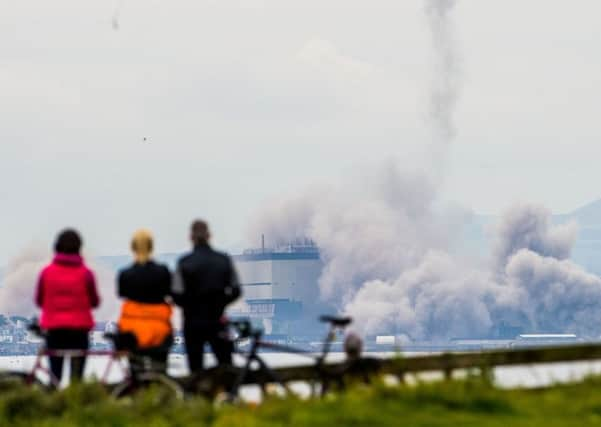Prestonpans named on WHO pollution danger list
This article contains affiliate links. We may earn a small commission on items purchased through this article, but that does not affect our editorial judgement.


Poor air quality is a major cause of disease and death, WHO warned.
One way the global health body assesses air quality is by examining the levels of a type of pollution known as particulate matter (PMs).
Advertisement
Hide AdAdvertisement
Hide AdDOWNLOAD THE EDINBURGH EVENING NEWS APP ON ITUNES OR GOOGLE PLAY
WHO’s latest data shows that 11 urban areas across the UK and Ireland breached the safe limit set for PM10. These include Port Talbot, Stanford-Le-Hope, Glasgow, London, Scunthorpe, Leeds, Eastbourne, Nottingham, Southampton and Oxford, as well the town of Longford in Ireland.
And more than 40 towns and cities across Britain and Ireland - including Prestonpans - breached the safe levels for another measure known as PM2.5.
WHO said that across the world 80 per cent of cities that measure outdoor air pollution are failing to meet its guidance for safe levels of air quality.
Advertisement
Hide AdAdvertisement
Hide AdAs air quality declines, the risk of stroke, heart disease, lung cancer, and chronic and acute respiratory diseases, including asthma, increases for the people who live in these areas, the health body said.
It said that ambient air pollution, made of high concentrations of small and fine particulate matter, is the greatest environmental risk to health - causing more than 3 million premature deaths around the world every year.
Dr Flavia Bustreo, WHO’s assistant director general for family, women and children’s health, said: “When dirty air blankets our cities, the most vulnerable urban populations - the youngest, oldest and poorest - are the most impacted.”
Dr Maria Neira, director of the Department of Public Health, Environmental and Social Determinants of Health at WHO, added: “Urban air pollution continues to rise at an alarming rate, wreaking havoc on human health.
Advertisement
Hide AdAdvertisement
Hide Ad“At the same time, awareness is rising and more cities are monitoring their air quality. When air quality improves, global respiratory and cardiovascular-related illnesses decrease.”
Commenting on the report, Jenny Bates, Friends of the Earth air pollution campaigner, said: “This is yet another report which shows the air we breathe is unsafe. With 40,000 early deaths a year in the UK from air pollution, what more will it take for our political leaders to act?
“This is a public health crisis. It’s time it was treated that way. We need fewer and cleaner vehicles with a Clean Air Zone in every city and large town - and politicians must urgently introduce a diesel scrappage scheme to get the worst polluting vehicles off our roads, as well as more investment in alternatives to driving.”
Dr Penny Woods, chief executive of the British Lung Foundation, added: “It is deeply concerning that 40 UK towns and cities are failing to meet WHO standards for the smallest, most harmful pollution particles. These particles are able to reach deep into our lungs and even into our bloodstream, and can have a serious impact on our breathing and wider health.
Advertisement
Hide AdAdvertisement
Hide Ad“It is clear from this report that the UK is facing an air pollution crisis. Unfortunately, the Government’s response so far has been inadequate. Swift action must be taken to reduce pollution levels in the UK and protect our lung health.”
The British Lung Foundation has said the number of towns and cities breaching standards for the smallest pollution particles is “deeply concerning”.
FULL LIST
List of the areas across the UK and Ireland named by the World Health Organisation for breaching safe levels for fine particles in the air, known as PM2.5:
• Glasgow
• Scunthorpe
• Leeds
• Eastbourne
• Salford
• London
• Southampton
• Longford, Ireland
• Port Talbort
• Birmingham
• Stanford-Le-Hope
• Chepstow
• Portsmouth
• Stoke-on-Trent
• Oxford
• Thurrock
• Warrington
• Armagh
• Cardiff
• Bray, Ireland
• Norwich
• Leamington Spa
• Newport
• Bristol
• Wigan
• Manchester
• York
• Hull
• Nottingham
• Plymouth
• Swansea
• Carlisle
• Prestonpans
• Liverpool
• Belfast
• Londonderry
• Brighton
• Galway, Ireland
• Middlesbrough
• Birkenhead
• Saltash
• Southend
• Dublin, Ireland